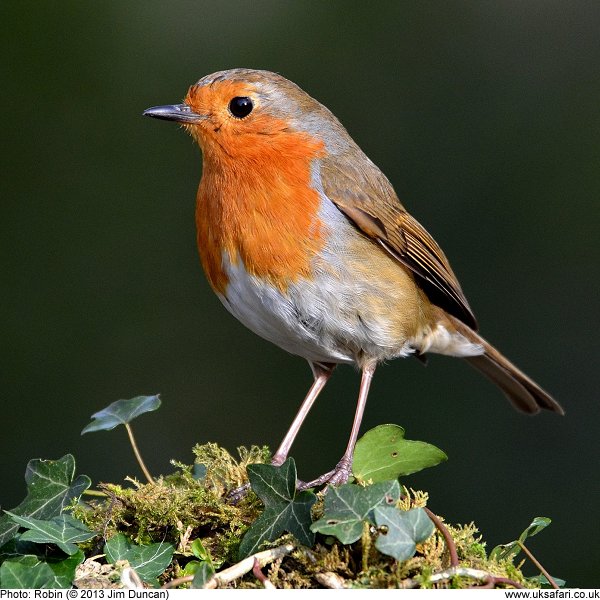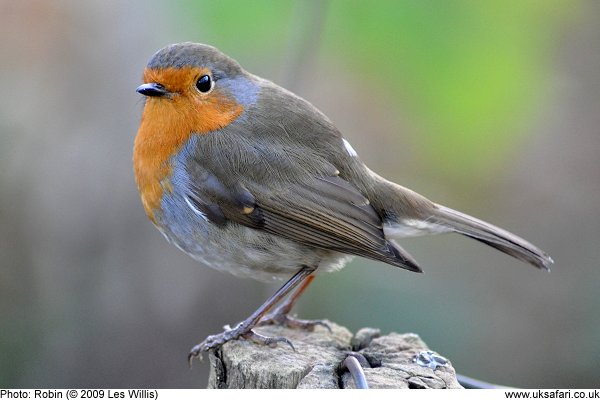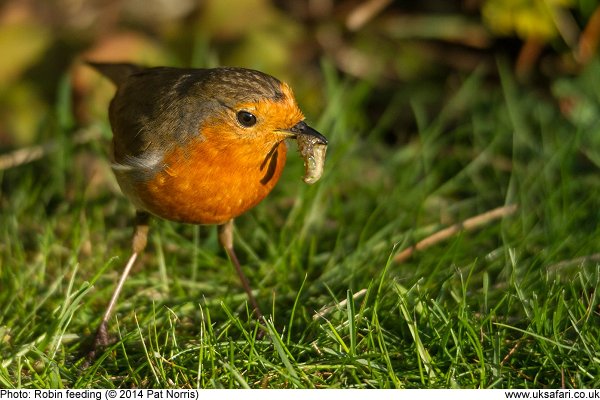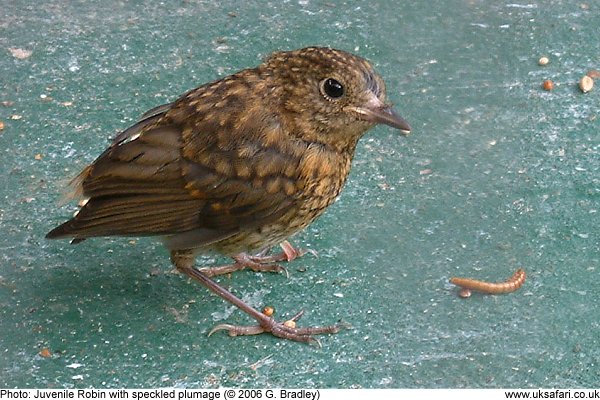 Quick Facts
Quick Facts
Scientific name: Erithacus rubecula
Size: Approx 14cm
Distribution: Found throughout the UK
Months seen: All year round
Life Span: Robins can live for up to 10 years, but only around 25% survive beyond their first birthday
Habitat: Parks, gardens and woodlands
Food: Insects, seeds and berries
Special features: In towns and cities the robin has become known as the gardeners friend. This is because it is quite tame, and will closely follow gardeners as they dig the soil and turn over worms and grubs which the robin will eat.
The robin's striking red breast plumage is most noticeable in the winter months. For this reason they're frequently associated with Christmas, and robins are often depicted on Christmas cards.
Adult robins pair up from late December through until March. Although the male sits in a tree singing for a partner, initially it is the female who does all the chasing. Once the female is accepted by a male, he brings her food as part of their courtship ritual.
The males and females look so similar it's difficult to tell them apart. Even the robins themselves have trouble. The only way for a female to be accepted by a male is to keep landing in the males territory until he realises what she wants. Adult males are fiercely defensive of their territory, and will attack other males that try to encroach, so the females have to take their chances.
The nests are usually built in a hole, either in a tree, a bank or a wall. Sometimes they will also nest in garden sheds, if they can find an easy way in and out.
The female robin lays between three and seven eggs. The eggs are white with flecks of red. Incubation takes about two weeks. The chicks stay in the nest for a further two weeks, and during this time the male helps the female to feed the family.
Young robins have brown speckled plumage. They moult into their adult plumage in their first autumn.
 Related Pages
Related Pages

 Popular Pages
Popular Pages
Amphibians, Bats, Badgers, Beetles, Birds, Birds of Prey, Bumble Bees, Butterflies, Caterpillars, Creepy-Crawlies, Deadly Spiders, Dolphins, Dragonflies, E-Postcards, False Widow Spiders, Free Newsletter, Frogs, Fungi, Garden Spiders, Glow-Worms, Grey Squirrels, Hedgehogs, House Spiders, Ladybirds, Mammals, Marine Mammals, Moths, Owls, Reptiles, Spiders, Toads, Trees, Wildlife Hospitals
© Copyright 2017 G. Bradley - UK Safari | About Us | Links | Contributors


 Robins
Robins





